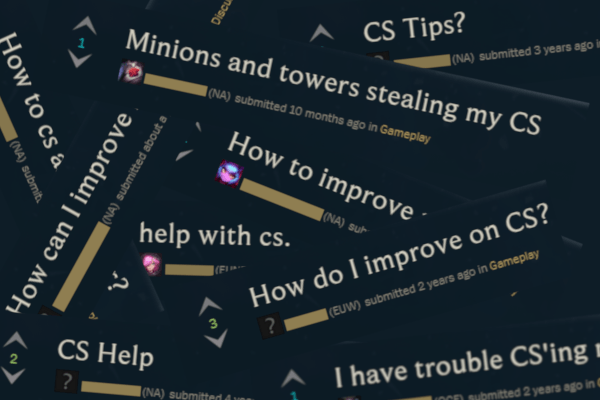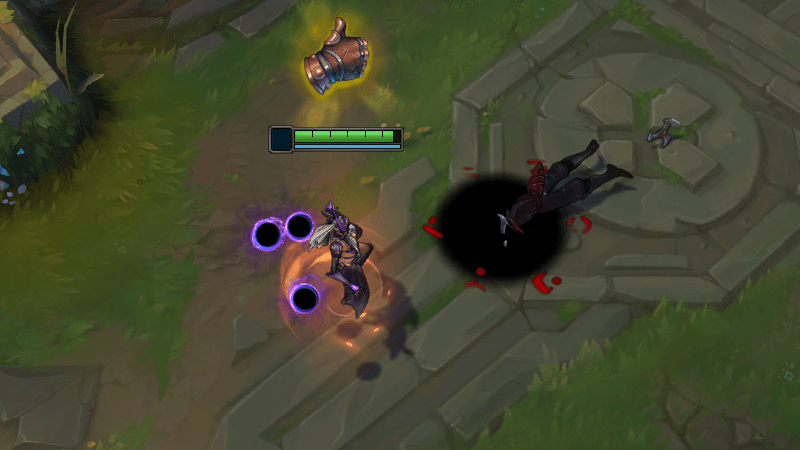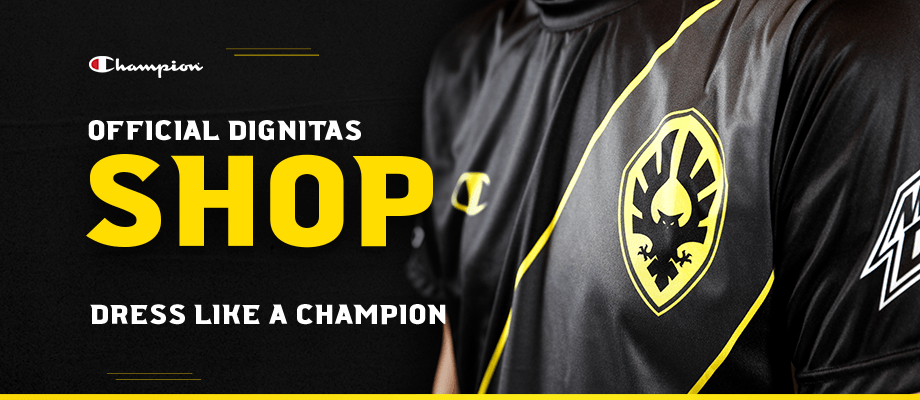How To Improve Your CS In League Of Legends
A comprehensive guide on strategies you can use to farm like a pro!
A comprehensive guide on strategies you can use to farm like a pro!
It’s the problem that every player from Iron IV to Challenger has faced at some point in their League of Legends career—no, we’re not talking about playing against Teemo. We’re talking about Creep Score (CS).

This topic has headlined a countless number of forum posts and many believe it to be the secret to escaping "Elo Hell", so today we're going to break down exactly how you can improve your Creep Score in League of Legends in 3 parts: theoretical, practica,l and technical. Implementing the strategies outlined through this guide and taking some time to understand just how valuable CS can be to your next game on the Rift can absolutely be the difference between an unfortunate defeat and seeing your team through to victory.
Starting with the basics, what is Creep Score? Well, the most literal definition of CS is:
“The number of killing blows a player has landed on minions and monsters”.
This, however, does not accurately represent the value of CS to the player, nor the impact that it has on every game of League of Legends you’re likely to play. As just a few examples, a player’s income, experience and lane control can all be determined by their CS. Before we explore methods of improving CS, it is first important to understand the benefits that a strong Creep Score will have over a weaker one, so that your priorities in each of your games can be focused in the right areas.
In League of Legends, there are a variety of ways that you can earn gold. CS, Kills, Turrets, and certain Runes are the most common providers of gold in Summoner's Rift. One of the greatest fallacies in the mentality of a new player is that chasing down kills is worth more time than acquiring CS and sure, you can’t go Godlike by farming minion waves, but breaking away from this frame of mind is necessary for stepping up your game. As minions are constantly spawning, the continuous supply of gold that they offer is an invaluable resource to the player, more so than any of these previously mentioned alternatives. This is a simple concept to understand, but integrating it into your gameplay will ensure you begin to see a drastic improvement in the outcomes of your matches. To demonstrate this point, let’s look at a practical example:
Zed is matched up against Syndra in the Mid Lane.
At 10 minutes, Zed has collected, through kills and passive gold, approximately 2,865g. Now, let’s compare this with the opposing Syndra’s perspective:
Syndra, on the other hand, has accrued roughly 2,931g from farming, passive gold and turret plates combined.
In 10 minutes, Zed will have made less gold than Syndra, despite the pair being 4/0/1 and 0/2/0 respectively. At this rate, and as the value of Siege Minions increases over time, Syndra’s focus on farm will ultimately benefit her more than Zed’s kill-oriented gameplay. By the time teamfights break out, not only will Zed lose his advantage as an Assassin, he will have gained a bounty that the other team can cash in on when he’s inevitably slain.

This concept is also transferrable to your time in the Jungle, in that an effective jungle path to maximise your CS is vital to your ability to both assist your team and ensure your gold income is stable. That being said, knowing when to farm and when to gank can be the difference between helping a laner out of a difficult situation and letting them die, so make sure you take some time to learn your favourite junglers.
Understanding the advantage of a higher CS is the first step on the way to improving your game. You’re much more likely to win a lane that you’re leading in farm than one you’re leading in kills. Now that we have a grasp on the theoretical side of farming, let’s look at the best ways to put this knowledge into practice.
The next step to improving your CS is ensuring that your practical ability is as sharp as it can be; there’s no point learning different formulas for success if you don’t have the right ingredients. Last hitting minions can prove to be challenging, especially with so many different contributing factors to their health in lane, so we’re going to have a look at some drills and practice tools you can run yourself through to ensure your last-hitting is on point.
Elyndar’s Guide is a well known guide to improving your CS that has stood the test of time and aided many improving League players; focusing on a step-by-step progression plan that aims to increase the player’s awareness of minion health, your champion’s damage output and farming in the face of adversity. While this guide is incredibly effective for the earlier stages of the game, and provides the framework for an excellent training plan, we can elaborate upon this and enhance our learning experience by exploring a variety of tools to improve our gameplay.
As a quick browser-based exercise, this farming mini-game is a brilliant way to test yourself by seeing how many waves you can farm uncontested. By being able to change your damage values and attack speed, you can simulate your favourite champion’s stats and learn in a less competitive environment exactly how to deal with a pushed lane. This is a perfect starting place and warm-up drill before you jump into the Rift, as it also shows you how much gold you’d have made and missed as you go along to give you an awesome visual representation of how much your farm is impacting your performance.
Finally, I would recommend picking a champion or two in your preferred role to specialise in, so that you can learn the best ways to utilise their abilities and stats in as many different situations as possible. By mastering your favourite champion(s) and becoming comfortable with their kits, you’ll undoubtedly begin to identify patterns to take advantage of while farming. As an example, because of the extra damage Draven’s Spinning Axes provide, he can finish off Caster Minions with just one auto-attack and a tower shot, where other ADC’s would typically have to auto-attack twice to secure the last hit. Incorporating your expertise with your favourite champions into your practice is extremely effective and can speed up your learning process dramatically.
Beyond this, there’s nothing better than practice, practice, practice! Set yourself reasonable targets before each game and aim to accrue a certain CS by a specific time so that you can try out different ways to reach it and become a highly adaptable player in your designated role. Now, having a firm understanding of the importance of farming and have a few useful tools at our disposal to practice last-hitting minions, let’s look finally at different ways we can control the lane and position ourselves to be in the best position to secure those crucial last hits.
One of the most enjoyable features of League of Legends as a player is the dynamic nature of the game; that is, no two games are going to be the same. However, the one thing you can guarantee is that there will always be minions running down your lane and mobs spawning in your jungle, so identifying patterns and having a sharp technical ability while you’re clearing minions is crucial to maintaining control in your lane and optimising your gold income. Take a look at the following image:
From this image there are three key elements to observe that will be present in every one of your games, and we’re going to discuss the different mechanics at play in relation to each of them so that you can employ your knowledge as effectively as possible.
Turret damage, during the early game, is something that you need to be mindful of regardless of your lane and role. Whether you’re going for that Spoils of War execution or just trying to secure a minion, figuring out exactly when to attack is pivotal in extending your lead against enemy laners. Each minion type can take a different number of turret shots before dying, and should be dealt with as follows:
Turrets will also focus on certain minions based on their minion type and their proximity to the turret. Siege Minions will be targeted as a priority as soon as they come into range, followed by Melee Minions and then Caster minions, so ensure that you take note of which minion will be targeted next and react accordingly.
Depending on the strategy you use to control the position of the wave, you’re going to have to adjust your focus on minions in a variety of ways. There are many different ways to manipulate the location of the minions in your lane, and even the slightest amount of damage can cause a reaction in the movement of the wave. We’re going to have a look at the two most general forms of wave control that you will see in your games, whether you’re aware of it or not.
“Freezing” is the first method of wave manipulation, and it involves keeping a wave as still as possible. The way this is achieved is by attempting to keep the number and health of minions in the lane as close to equal as possible, and is best implemented when you’re playing against an aggressive lane. To move the minions in a certain direction, you need to ensure one side takes more damage than the other, and the remaining minions move forward until they’re met with the next wave. The benefits of this tactic are numerous; freezing a wave closer to tower can ensure you have safer access to farm when your enemy is looking for a fight, as well as leaving your lane open to ganks should the enemy move closer to take your minions for themselves.
“Pushing” is the second and considerably easier technique of the two for controlling a wave, as it is simply done by killing the enemy minions as quickly as possible by dealing more damage to them. This is best exercised after the enemy lane has Recalled, so that you can damage their structures enough to get some extra gold through Turret Plating, while also forcing their Turret to kill your minions and denying valuable CS before they return to lane.
You’re always going to be faced with at least one opposing laner in League of Legends, so learning to play around them is vital in securing your own CS. While chasing kills is not preferable to farming CS, pushing your enemies out of their lane allows you the comfort and extra time to farm in peace, meaning that a balance in lane between farming and fighting must be achieved to most effectively boost your income. Bear in mind that no two laners are the same; predicting every mannerism your enemy might have and micro-movement they may make is impossible, but there are a number of ways that you can gain an edge over them by working with the minion wave and understanding the most advantageous times to act. Here are a couple of handy examples:
That concludes my guide on improving CS. There are plenty of excellent tools throughout this article that you can experiment with and a variety of different ways you can change up your playstyle on the Rift to give yourself the best chance of victory by improving your CS. Not all of them will be applicable in every scenario and discerning which to focus on at any given time is simply going to take practice, but eventually you’ll be dominating your lanes without a second thought. GLHF!
Like our content? Support us by getting our merchandise in our shop
